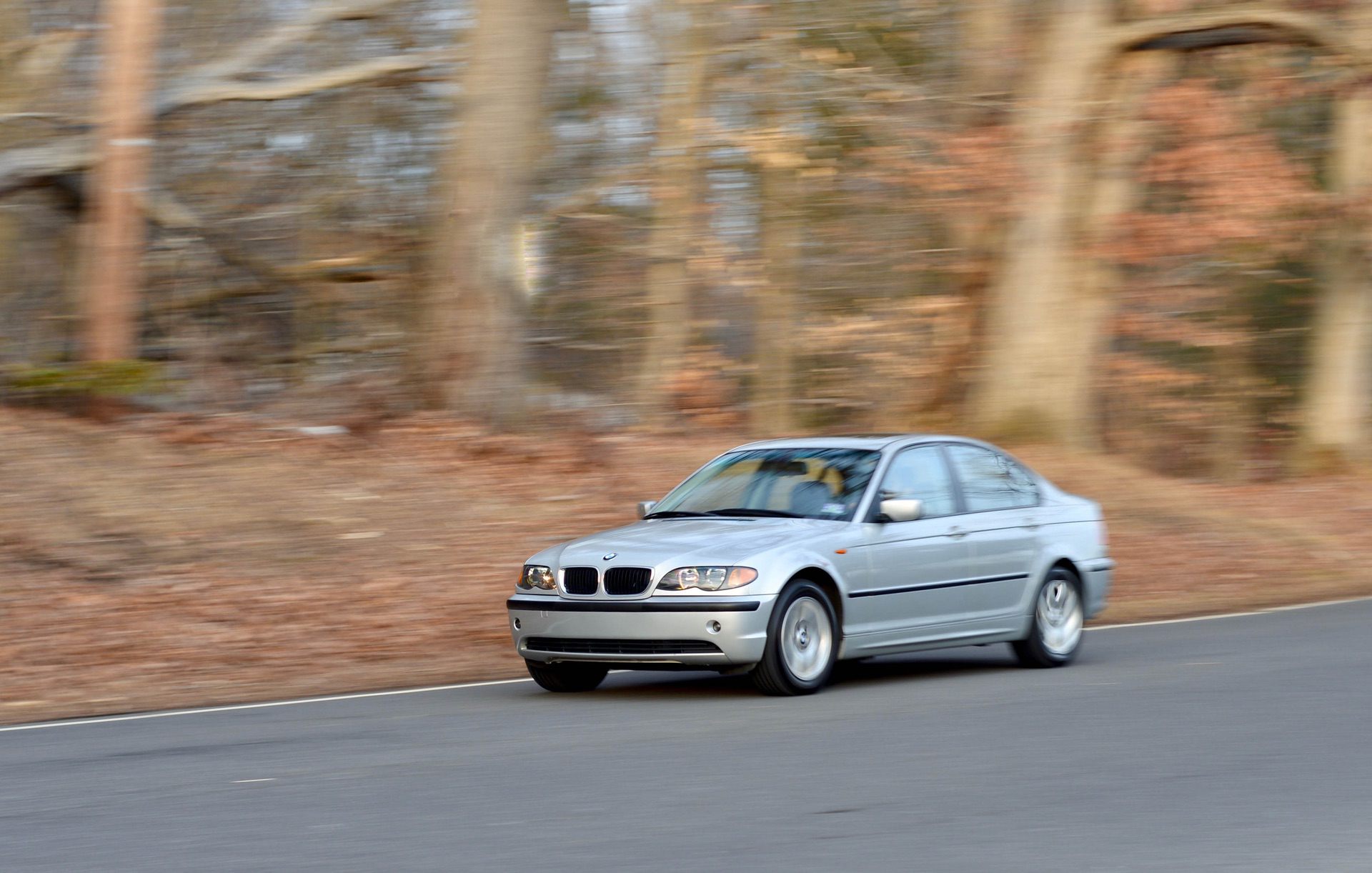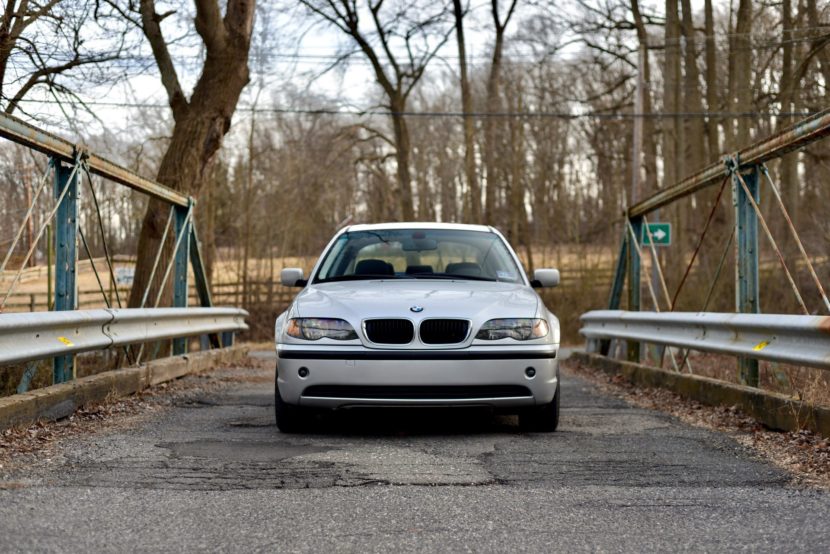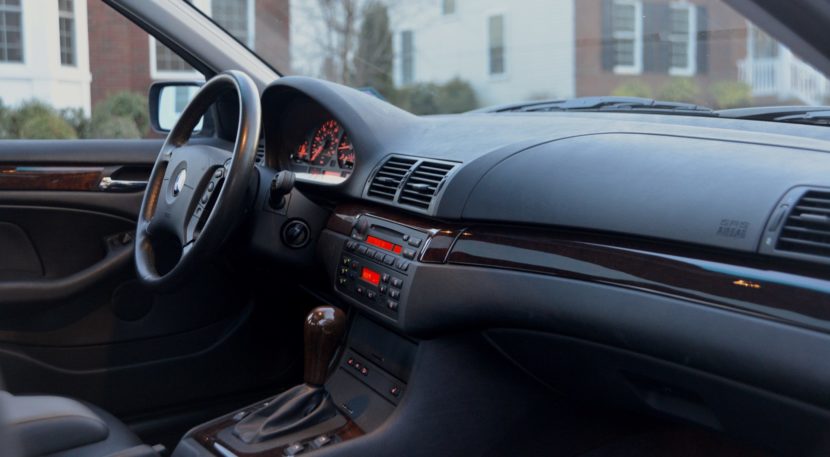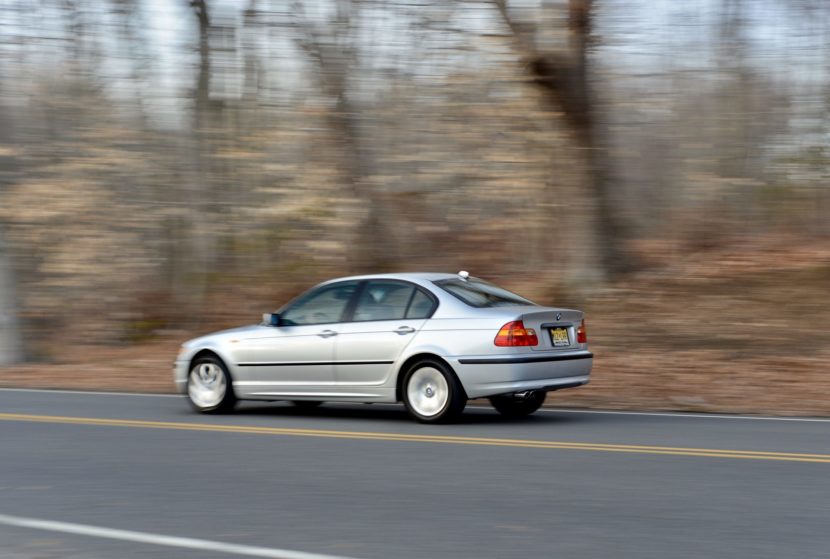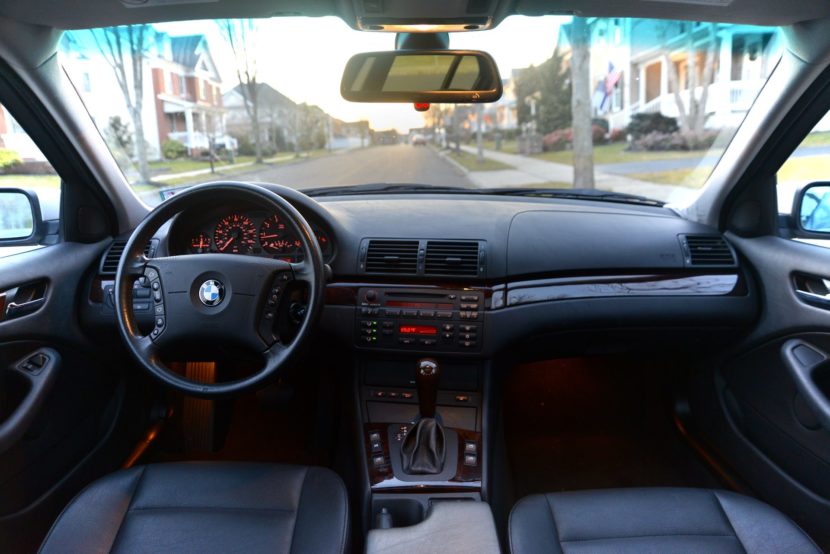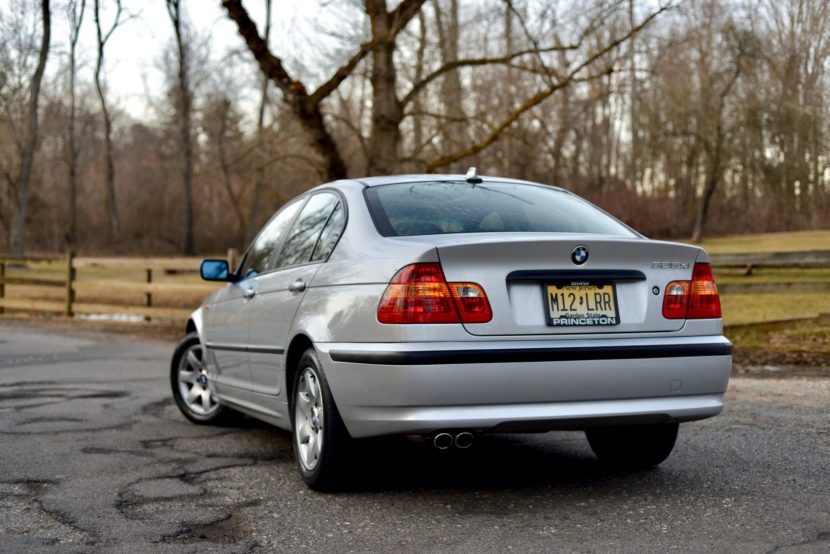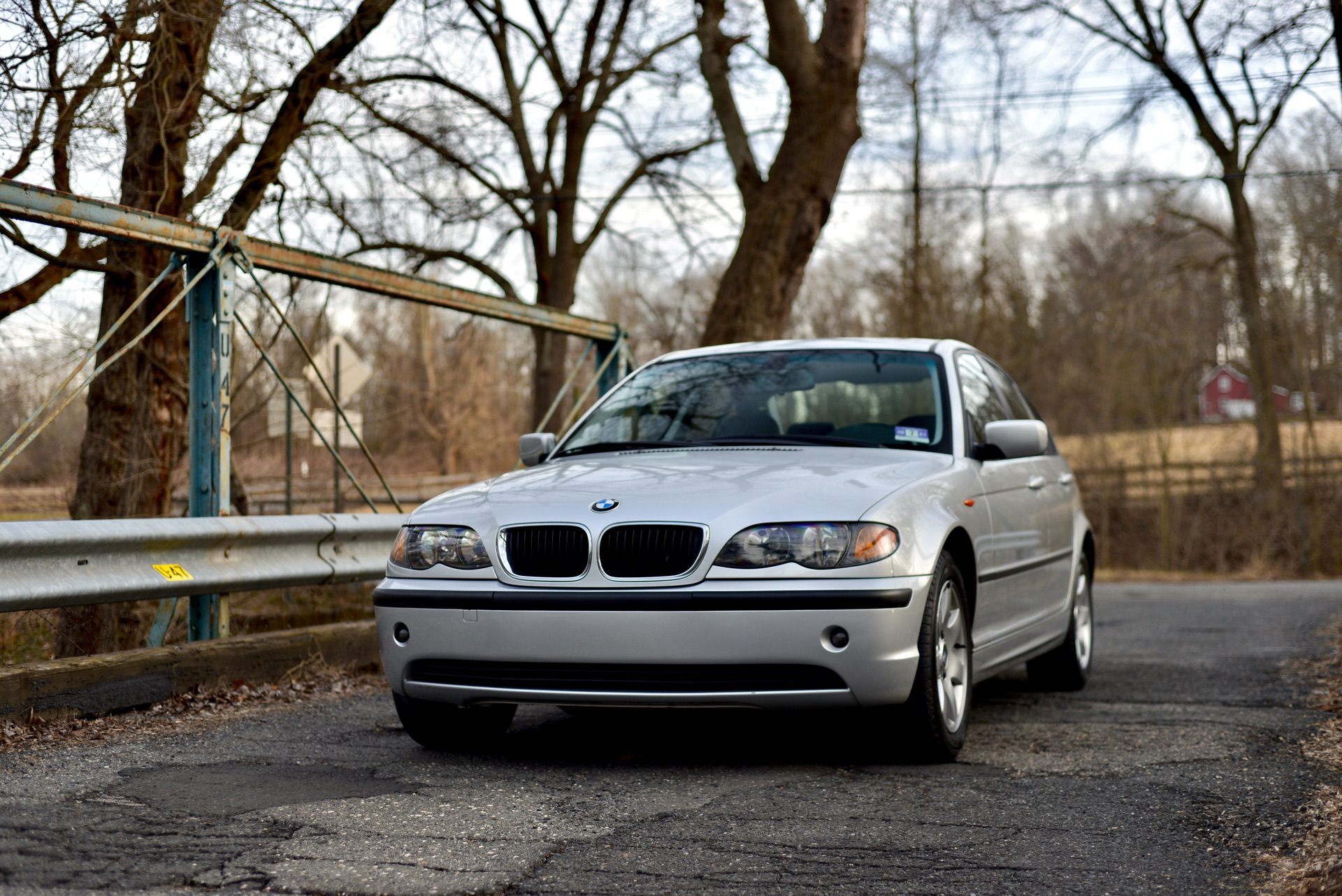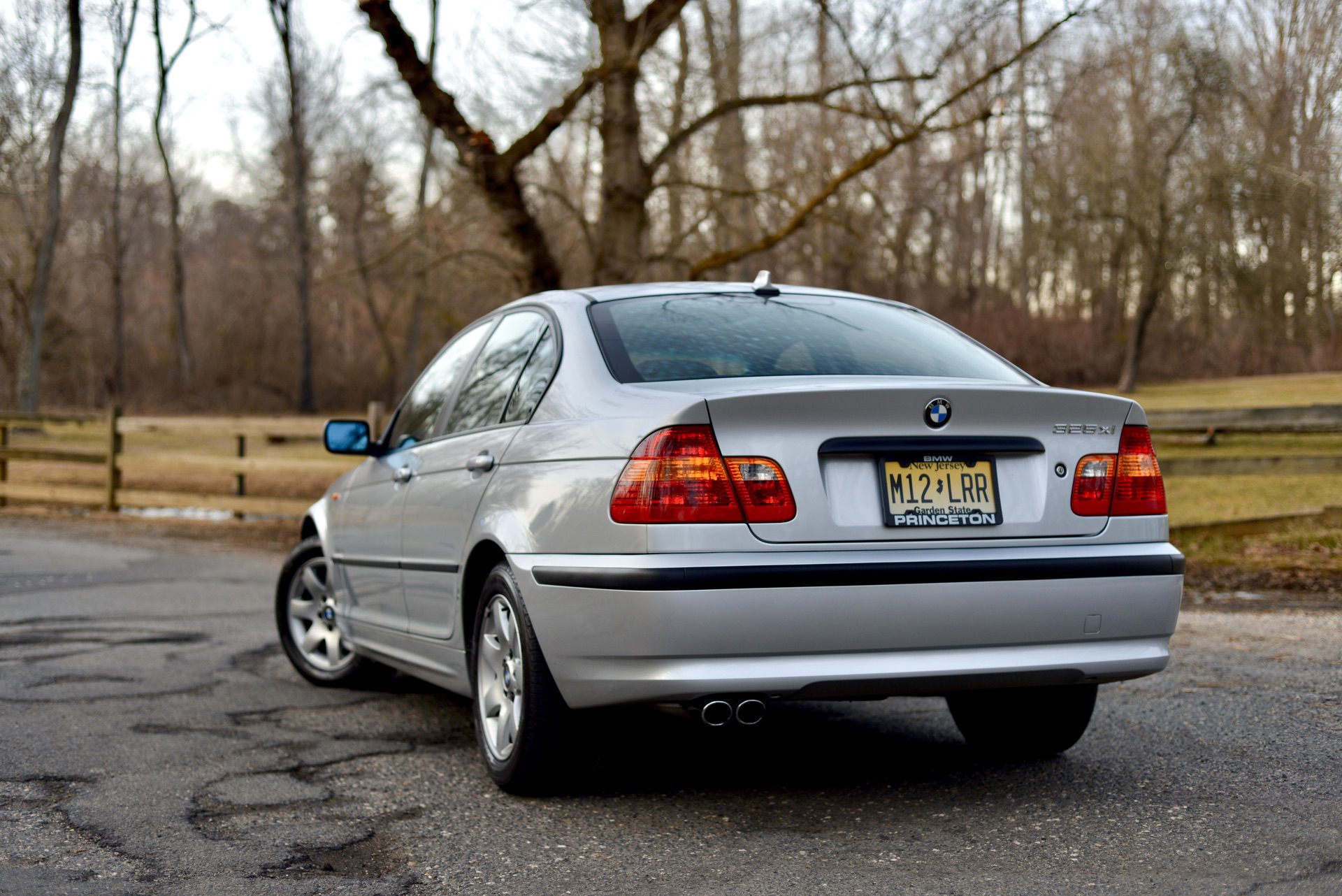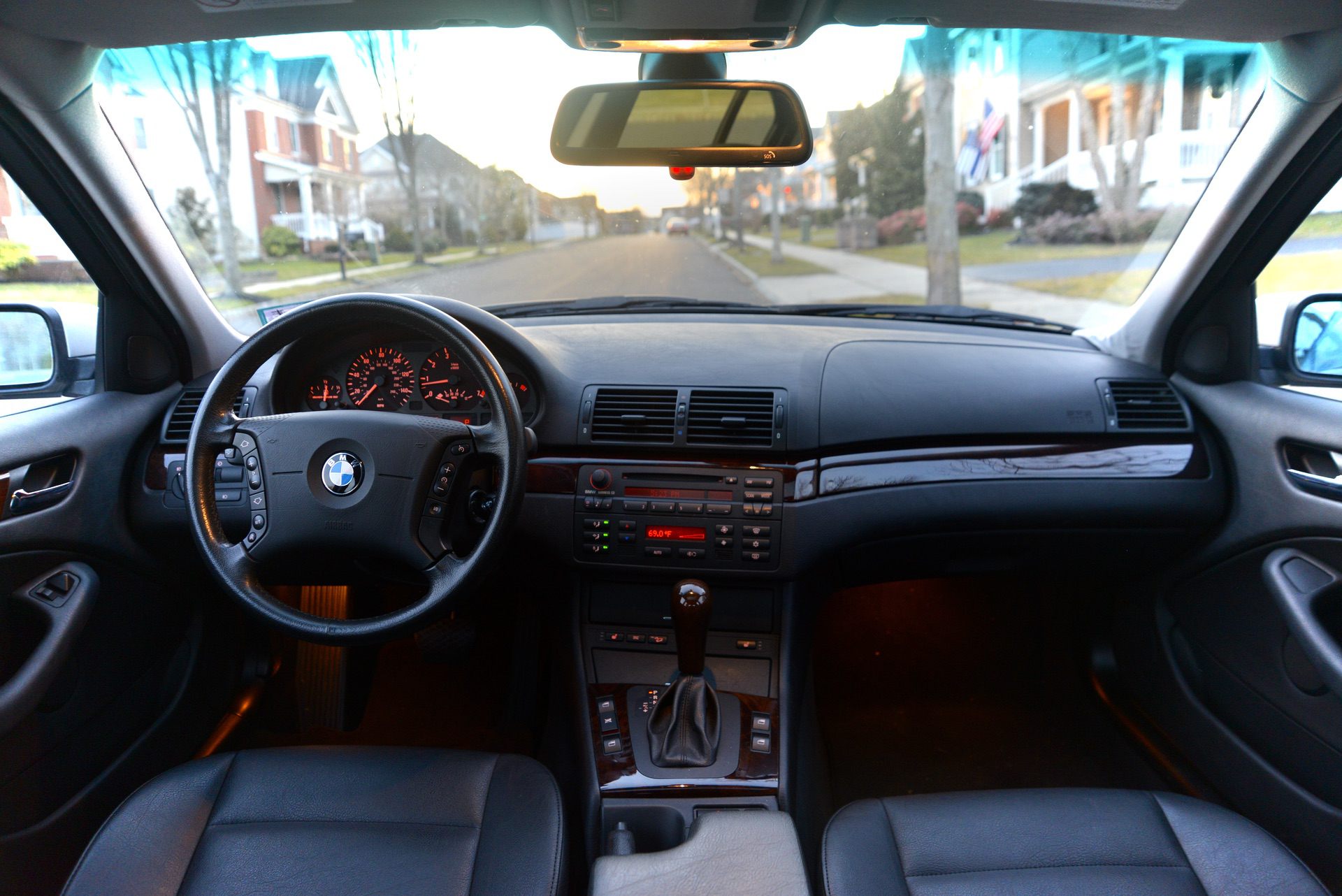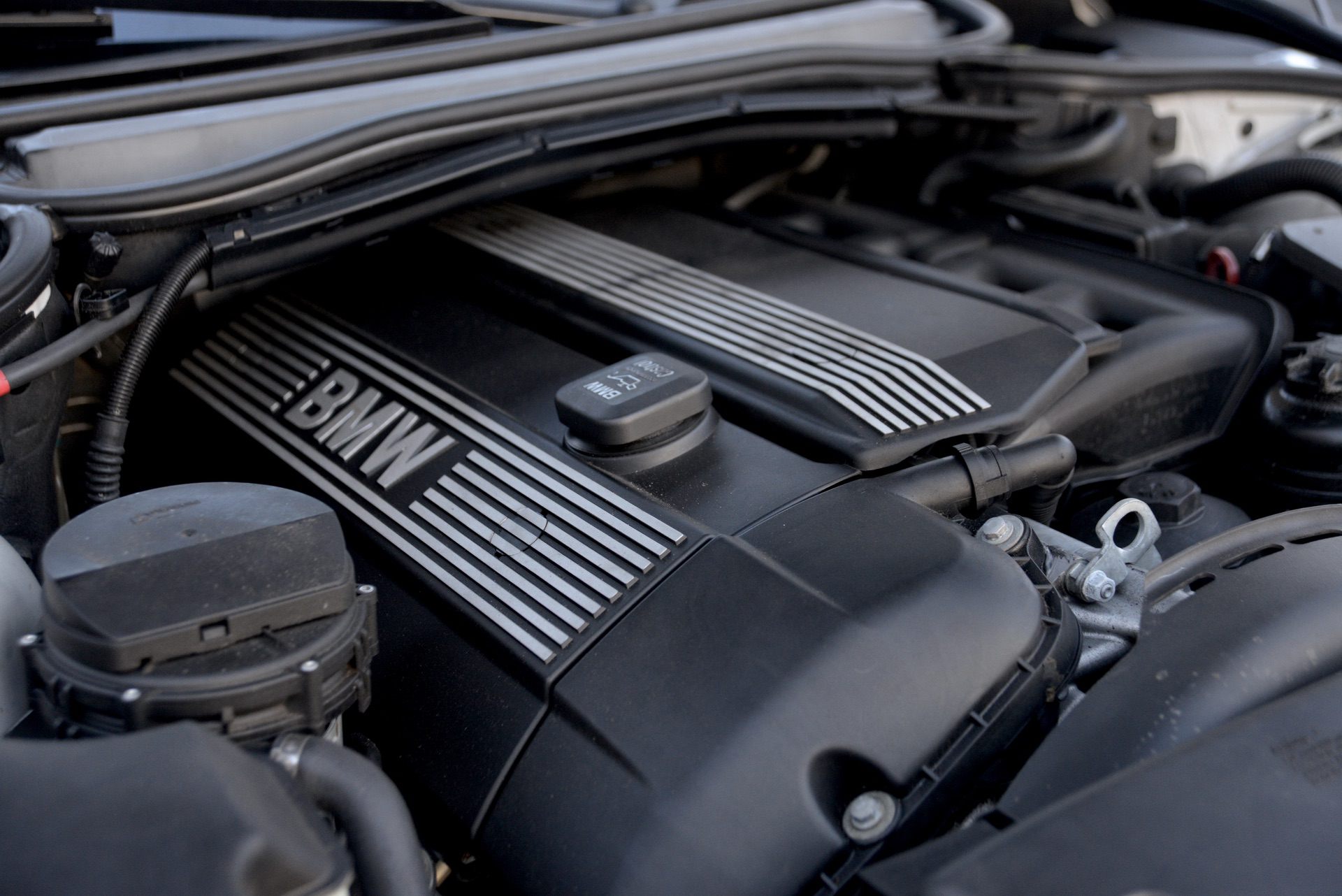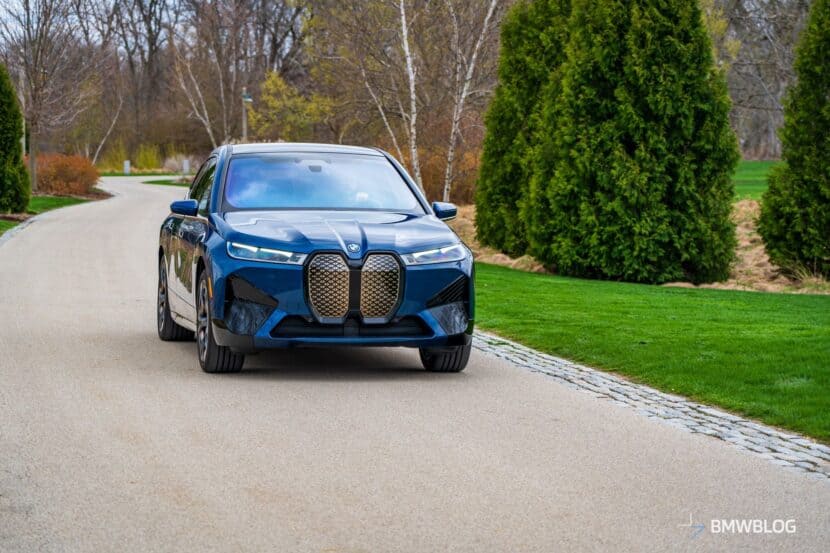Once you get behind the wheel of a BMW E46 3 Series, it becomes clear to why it is one of the most popular BMWs among enthusiasts more than 20 years after its introduction.
The E46 3 Series was the replacement for the E36, and was introduced for the 1999 model year. In the U.S., the car was exclusively available with inline six-cylinders ranging from 2.5 liters in the 323i and 325i, to 3 liters in the 330i. This 3er remained largely the same throughout its seven year long production run.
In 2002 it received a minor facelift which freshened up the front and rear fascias, making it look a bit more modern. The car tested today is a 2005, meaning it is a facelift, or LCI in BMW terms.
One Of The Best BMW Steering Systems
This has been said over and over again, but the main thing that goes through your head while driving an E46, or any older BMW for that matter, is how great the steering is. The hydraulic rack has a heavier weight compared to most modern cars, and provides an exceptional amount of feedback from the front tires. Something that some new EPS systems get close to, but haven’t exceeded.
You get a perfect sense of the grip levels through the wheel, instilling a huge amount of confidence while carving back roads, and making you feel like a professional driver while doing so; and the amount of feedback isn’t too extreme. When you go over a pothole you can feel it, but it doesn’t break your arms loose.
The suspension is comfortable on longer journeys, yet being perfectly appropriate on the back roads. You turn the car on, and it is in THE setting. Choosing between a comfort and a sport mode is not needed.
The Era Of Naturally-Aspirated Engines
The 2.5 liter straight-6 in this 325xi produces 184 horsepower and twists out 175 lb-ft of torque. It won’t be running 10s in the quarter mile, but that amount is truthfully more than enough for a car like this. It builds power linearly all the way through its 6500RPM redline. No turbos here. You get instant response from the engine, at any RPM.
The M54 in this example makes a great noise, which is to be expected from a BMW inline-6. The car driven here has the 5-speed automatic which is a decent enough transmission. It shifts slower than what a skilled driver could do with a stick, but it is not terrible. It’s no ZF 8 or dual clutch, but it gets the job done without bogging down the whole car.
However, what you really want is the manual, for pretty clear reasons. It makes the car more responsive, and more rewarding to drive overall. The manuals were mostly 5-speeds, ZHP’s and later 330i’s came with 6-speeds.
The size is just right. At 176 inches long, it is shorter than a modern day Civic, shorter than the BMW 2 Series Gran Coupe, and an enormous 9 inches shorter than the current 3 Series. While driving, the result of this is immediately apparent. It truly feels light, and gives you a feeling that it’s not trying its hardest to hide its weight and size like a lot of newer cars.
Driver-Oriented Interior Design
It’s no Cayman, but besides the seat height and position, the experience is not very dissimilar from the feeling of driving a sports-car. Plus, you can carry four others while doing so.
Even though this is a small car compared to today’s BMWs, it doesn’t feel cramped inside. The cabin is airy, with large windows all around letting in a good amount of light. There is easily enough room for four adults, and maybe five if there’s someone you don’t like.
The instrumentation is typical BMW. Easy to read in the day, and easy to read in the night with the orange backlighting. There isn’t a lot of technology to be found in the cabin besides a radio and a CD player. No Bluetooth (obviously) but if you want to play music from your phone through Bluetooth you can convert the stereo to a more modern system, or you can get a small radio bluetooth radio transmitter for much cheaper which gets its power from the 12v socket in front of the gear lever.
Timeless Styling
Not much to say on the styling besides how timeless it is. The owner of this car has said that a large number of his friends thought he bought a brand new BMW after taking a first look at it. Part of it is that they don’t know much about cars, another part of it is how clean this specific example is, but the main reason is just how sleek and elegant this design is.
It is hard to believe this was a car designed in the 90s. It was the first 3 Series that wasn’t super blocky. The E21 and E30 especially, were boxes on wheels. The E36 got some curves, but still was an overall boxy design. The E46 has way more curves than an E36, but still retains sharp lines such as on the rear deck lid, as well as the character line running all across its side.
The BMW E46 3 Series is newer, thus more practical to daily and more available to purchase than the prior E30 and E36 generations; it has classic styling which the E90 after it can’t compete with, and has a small size and telepathic steering which the F30 and G20 can’t match.


